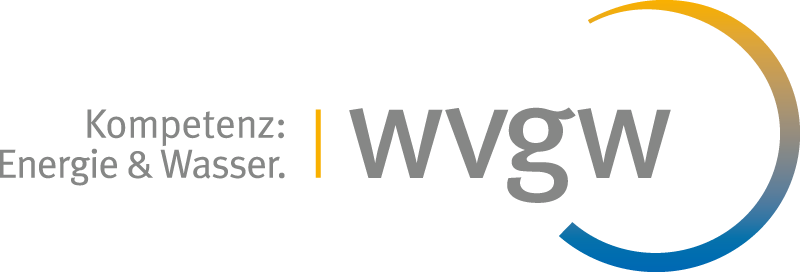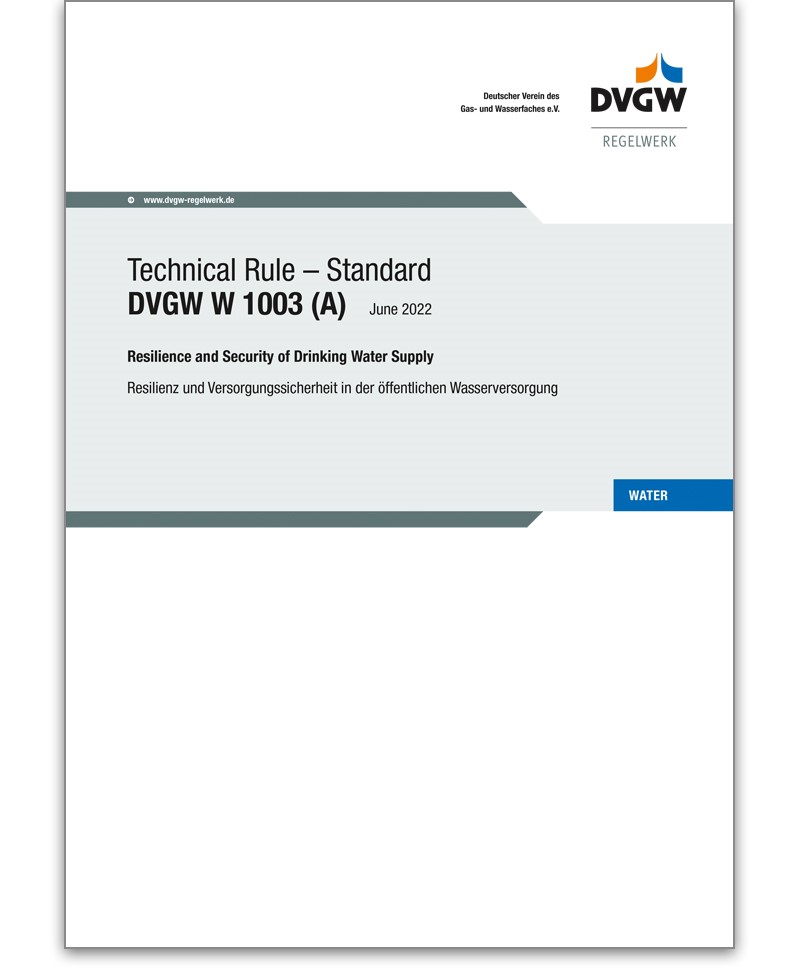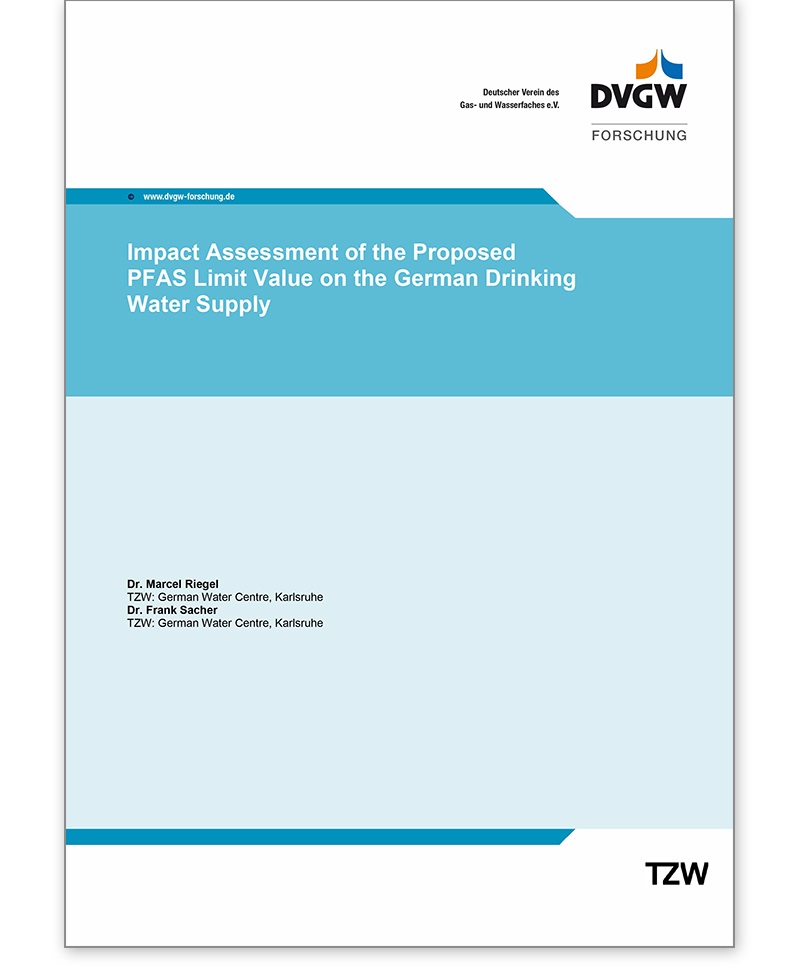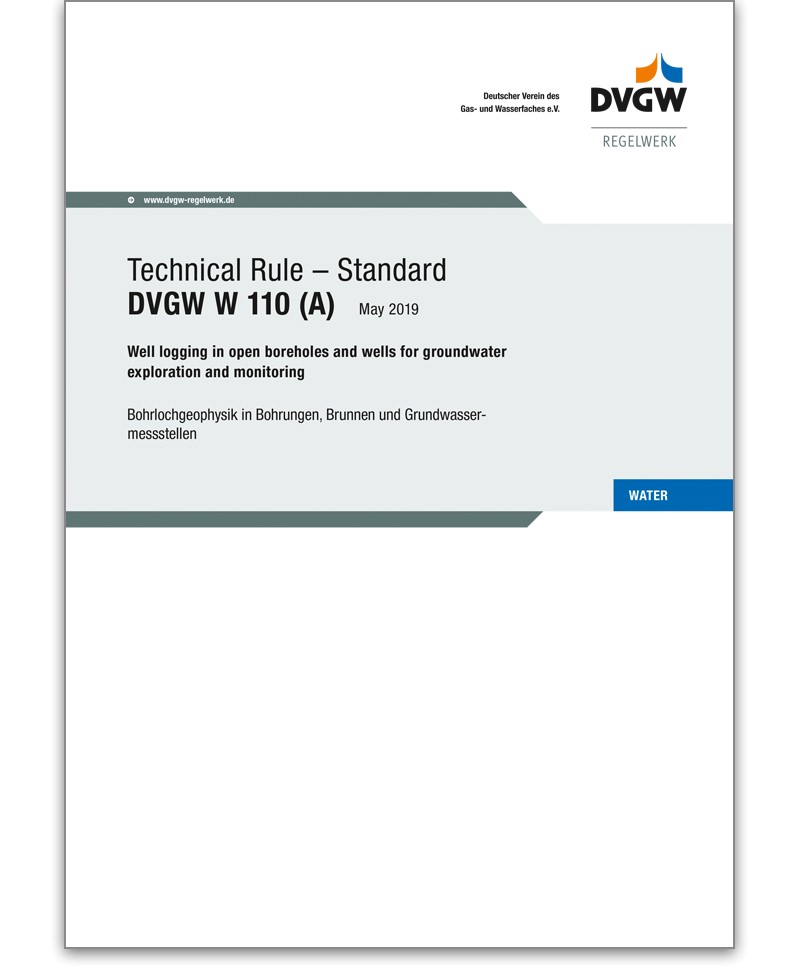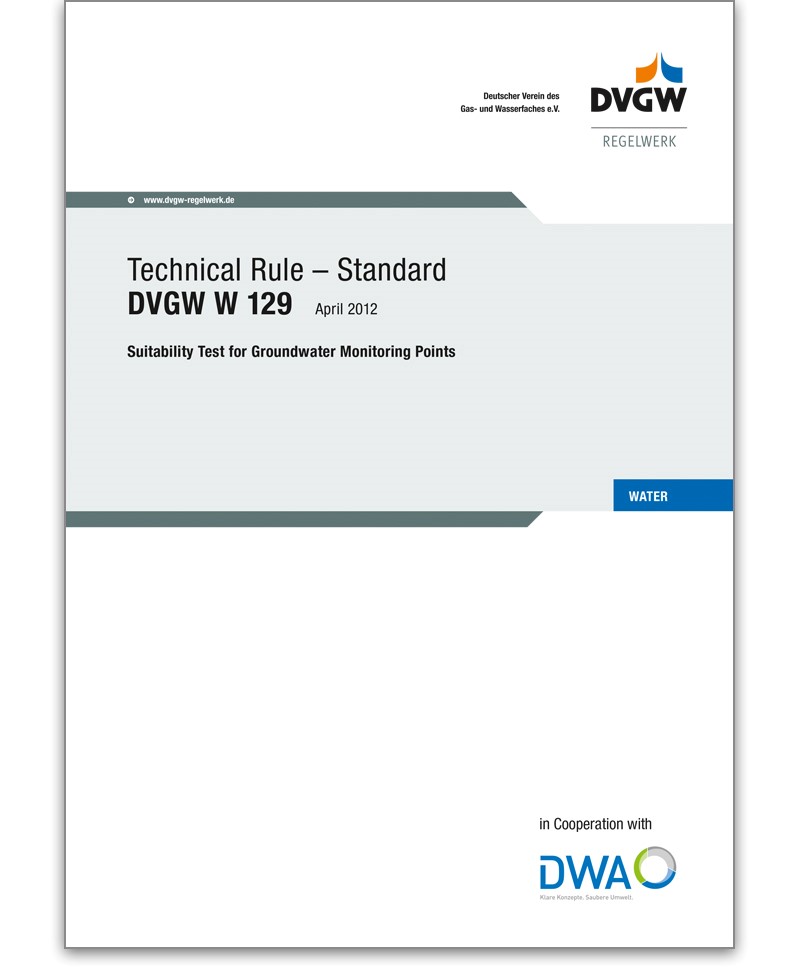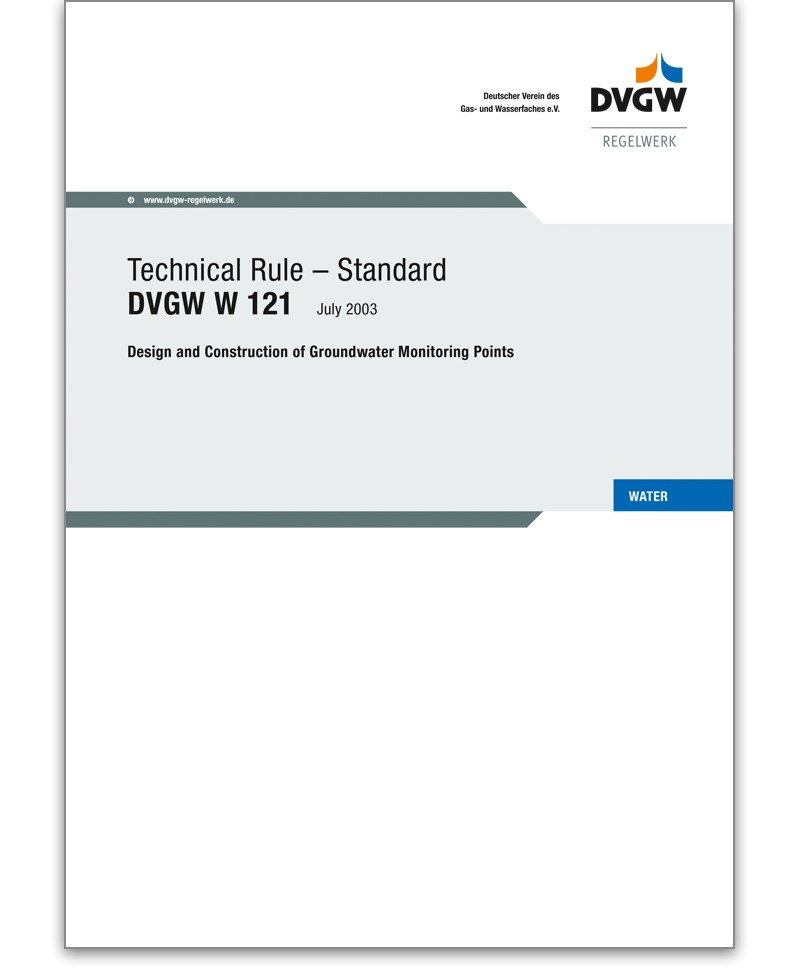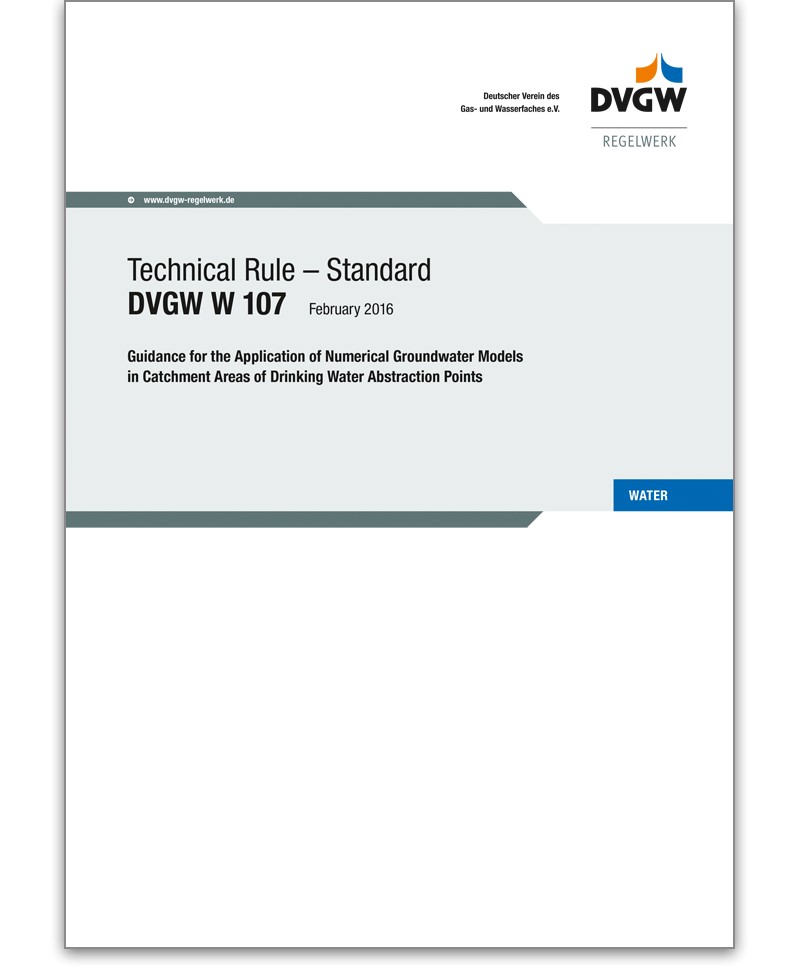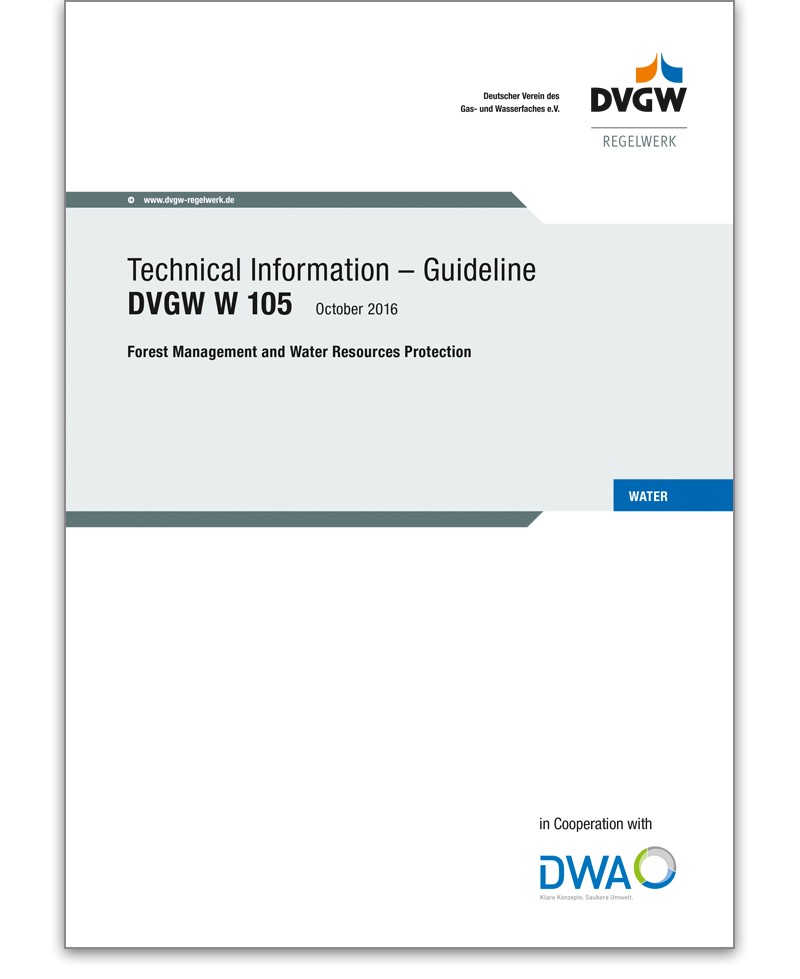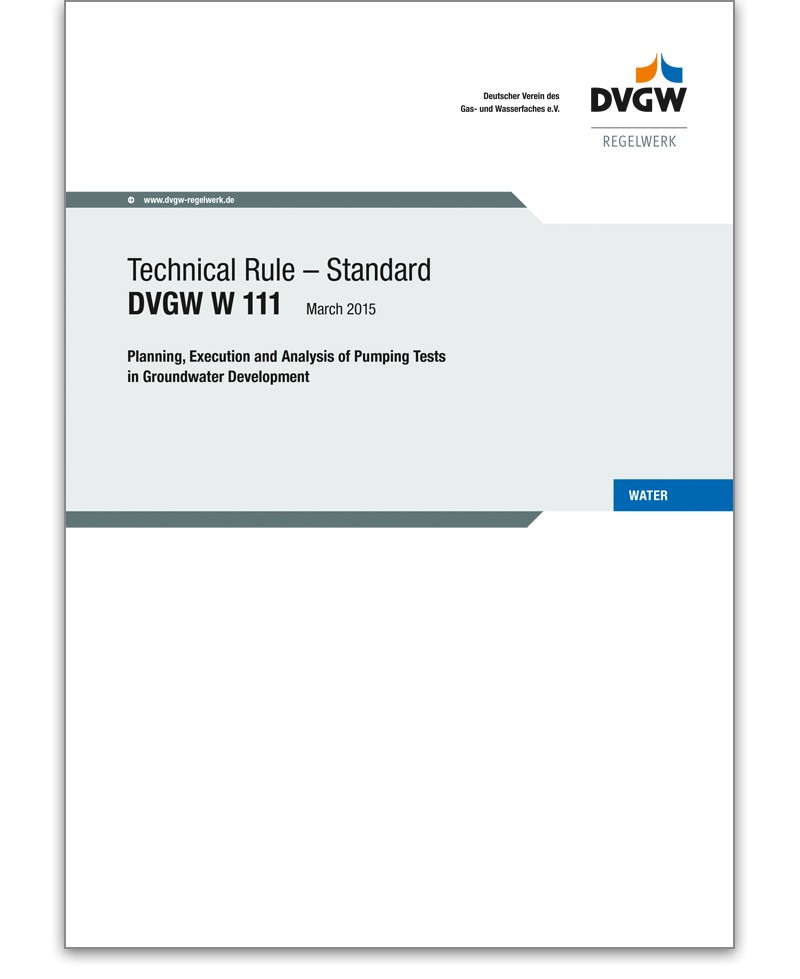Filter
–
Water resources
The DVGW Codes of Practice and standards in this section deal with resource management and the protection of groundwater resources and surface waters used for drinking water supply.
W 1003 Technical Rule- Standard 06/2022 -PDF-Datei-
79,28 €*
This Standard W 1003 relates to the piped supply of public
water under normal operating conditions. Covering the different technical
aspects and value-added steps, it provides an integral overview of how to
describe, analyse and assess the resilience and security of supply in water
supply areas.
W 110 Technical Rule - Standard 05/2019
79,28 €*
This Standard W 110 intends to offer guidance for the beneficial use of geophysical logging measurements. It aims to help the user find the optimal combination of logging techniques for a defined task as early as in the concept phase of borehole surveys in vertical and, where due to design constraints, partially also in horizontal filter wells as well as in groundwater monitoring points. It is by no means a tool for evaluatingand interpreting geophysical measurements, a field that in the course of the last decade has evolved into an almost autonomous scientific discipline and, therefore, should be reserved for the relevant experts toengage in.This Standard applies to the design and execution of geophysical measurements in boreholes for groundwater exploration and abstraction in unconsolidated and consolidated rock, including well and groundwater monitoring point surveys. Drillings and probes used in near‑surface geothermal systems have a Special position in this context.
W 121 Technical Rule - Standard 07/2003 -PDF file-
62,03 €*
This Code of Practice W 121 serves as a basis for designing and constructing groundwater monitoring points.The design and construction of groundwater monitoring points is as important for groundwater Monitoring purposes as it is for precautionary, sustainable groundwater protection. Only correctly designed, competently constructed and reliably operating monitoring points can ensure meeting the current requirements of groundwater quality monitoring. A long service life, safe functioning and, in particular, safe sealing,count among some of the important quality features of groundwater monitoring points.This Code of Practice describes how to competently design and construct groundwater monitoring Points for monitoring the quantity and quality of groundwater. It describes the quality requirements for the construction, the building supervision and the acceptance of groundwater monitoring points.
W 113 Technical Rule - Standard 03/2001
62,03 €*
Knowledge of the grain size distribution of water‑conducting granular soil is of great importance for the construction of wells and for the description of the hydrogeological conditions. It is in particular possible to determine the required gravel‑pack diameter in a well's filter section on the basis of the cumulative grain size curve and the grain size distribution curve. In addition, it is possible to derive estimated data for the coefficient of hydraulic conductivity and the porosity of the examined soil sample. Results of the DVGW Research project Examinations on the stability and clogging of sand and gravel filters during drilling (DVGW 1982) have been included in the here described procedure to determine the required gravel‑pack diameter. Compared to the Technical Standard W 113 Determination, representation and evaluation of the grain size distribution of water‑conducting granular soils for geohydrological examinations and for the construction of wells from the year 1983, different practical possibilities for determining the required gravel‑pack diameter and the hydrogeological parameters coefficient of hydraulic conductivity and porosity are demonstrated. Apart from determining the grain size distribution, details on its representation and especially on its evaluation have been provided.
W 111 Technical Rule-Standard 03/2015
79,28 €*
This Code of Practice W 111 shall apply to pumping tests during groundwater prospection and development and to well performance reviews. pumping test or, to be more precise, well or aquifer test is performed between the construction and casing and the commissioning of a well. It documents the net output of the well that was achieved during the development stage, and permits drawing extensive conclusions about the local hydrogeological and hydraulic conditions. This Code of Practice intends to explain how to properly execute pumping tests to acquire and make available the considerable amount of data in the correct form. The information provided by pumping tests is crucially important for the future operation of a well as a repeat pumping test at a later point in time can help identify the well sageing process and record it appropriately, thusfacilitating the timely initiation of regeneration or rehabilitation measures.
